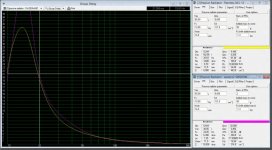Conclusion for Passive radiator system:
Special considerations regarding overloading of the passive radiator is needed for passive
radiator systems. Careful selection of limiting circuits and tuning frequency is needed to avoid
unwanted noises from the system.
It has been shown that the tuning of the box is possible but that the user need to invest some
time in adjusting the filters and limiters to achieve the goal. A high pass filter is highly
recommended like used for the vented system above.
Passive radiator system data:
Total volume: 35 litre
XLS 12" slave with 625g Mms Order Id 830549
Tuning frequency: 20 Hz
High pass filter:
Cut off frequency: 17 Hz
Q: 0,7
General notes about power requirements:
The XLS family has large excursion headroom and will handle high levels of power. In a typical
application the amplifier will begin to clip before the driver reaches the maximum level of
excursion. Low frequency amplifier clipping sometimes sounds as if the driver is overloading.
Therefore it is recommended to check the amplifier output with an oscilloscope to look for clipping
if the system sounds bad.
Using a limiter that controls the excursion and the loading of the amplifier is highly recommended.
General notes on excursion limitation:
From the simulations above it has been shown that it is possible to overload the drive units at
frequencies close to and below the system tuning frequency. Therefore a high pass filter set
closely below the tuning frequency where the sound pressure level decreases rapidly anyway, is
highly recommended. There is no need for the drive units to overload at frequencies where the
system produces no sound.
A high pass filter with cut off frequency just below the tuning frequency of the system is therefore
highly recommended.
General notes regarding filters and noise for subwoofers to avoid localisation:
It is a known fact that the human hearing looses the sense of direction for frequencies below
approximately 150 Hz. We are therefore not able to tell the position of a subwoofer that only
produces sound below this frequency. This means that we have freedom of placement.
However, above 150 Hz the human hearing starts to localise the source. This means that if the
subwoofer produces higher frequencies than approximately 150 Hz, the user will notice the
position.
To avoid localisation a sharp low pass filter is needed. A 12 db/oct@150 Hz filter will only
attenuate the lower midrange (300 Hz) by typically 15 dB. This means that the lower midrange
will radiate from the subwoofer thus revealing the position.









